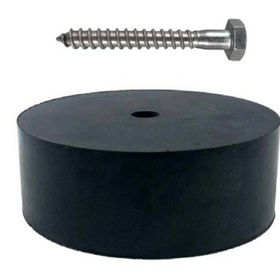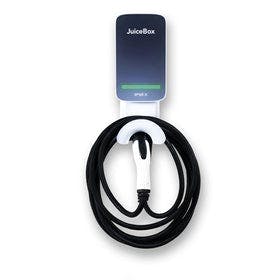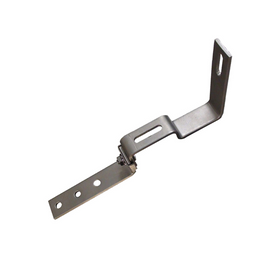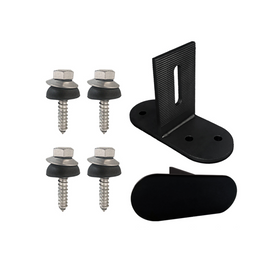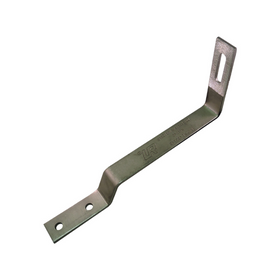
Flood-Ready Homes: How To Prepare
Last Updated: Feb 2, 2025In 2017, Hurricane Harvey descended upon Houston, Texas, and dropped record amounts of rains for several days. By the time the skies cleared up, over 135,000 homes had suffered severe flood damage. About 80 percent of those homeowners were without flood insurance to protect the investment in their homes.
As global climate change continues to lead to more severe weather events, the probability of the mythical "1,000-year flood" becomes a likelihood that many people might experience not just once but several times during their lifetime.
Little can be done to protect a home situated in a massive flood plain when a storm like Hurricane Harvey hits. But, sustainable housing strategies can help homeowners protect their homes from flooding through specific design strategies. Below, we look at a few different ways to build a flood-ready home that will limit your vulnerability to flooding damage.
Table of Contents
- Know Your Elevation
- What Measures Can You Take To Protect From Floods?
- Bottom Line

Know Your Elevation
The first step in protecting your home from flooding events is to know the elevation where your home sits. Even if the nearest river, creek, or other body of water sits several miles from your home, it is advisable to look up the flood level of your nearby watershed. Why? The flood level measures how high waters could potentially reach during an extreme flood event.
Most areas around the country will deny new building permits to homes located within flood zones. Also, people trying to sell their homes are legally required to disclose flood zone information to potential buyers. Nonetheless, you can check free online flood zone maps at FEMA's website here. You can also find a map provided by the National Oceanic and Atmospheric Administration (NOAA) to discover the frequency of flood events, by county, across the entire United States. You can sign up for free text messages or emails provided by the USGS's WaterAlert system. This system will let you know when a stream or river in your home's vicinity is rising to dangerous flood levels. In Canada, FloodSmart provides links to flood maps in each province.

What Measures Can You Take To Protect From Floods?
Even if your house is far from a flood zone, you can take some simple steps to protect your home from a potential flooding event. A couple of inches of flooding will most likely ruin your carpets and flooring. But, there is a considerable cost difference between replacing the moldy carpet and needing to rewire your home completely.
Protect Your Home's Electrical System
You can protect your in-home electrical system by opting to raise circuit breakers, sockets, switches, and other electrical wiring types. If your home is in or near a flood zone, you will want to keep all electrical outlets and wiring at least one foot above the flood zone. This set-up might mean that you will not have any lower electrical plug-ins to use for floor lamps, but that's a small price to pay to protect your home from significant damage.
You will similarly want to raise the furnace, water heater, air conditioning unit, fuel tanks, and other HVAC equipment so that they sit above the flood level in your property.
Stormwater and Grading Around Your Home
Even for a home located on a hilltop, well above any risk of flooding from rivers or creeks, incorrect grading can lead to severe flood damage. If the land around the foundation of your home forces water to run toward the foundation, heavy rains will cause water to accumulate around the base of your home. Small holes or cracks in your foundation can lead to large amounts of water making their way into your home.

Protect from Stormwater Backup
Perhaps you have done the work to protect your home from flooding. You've checked the local flood zones, corrected the grading around your home, and effectively managed your stormwater runoff. In this case, it is also important to protect your home from stormwater or sewer backup. In many parts of the country, and especially in congested urban areas, heavy precipitations can back up the combined sewer system. In the worst-case scenario, you might be looking at raw sewage backing up into your home, causing a disastrous and damaging flood.
A straightforward way to avoid being caught knee-deep in "you-know-what" is installing a backwater valve onto the sewer line leading into your home. Unlike traditional plumbing valves, this special backwater valve only opens away from your home. So, during any back-ups, the valve will seal the sewage line and protect your home from inbound sewage flow. You will not be able to use the water in your home when the valve is closed. But, since most significant floods are short-lived events, this is a simple way to protect your home at only a modest inconvenience.
Levees and Floodwalls
Homes that are at risk for continued flooding, installing levees or floodwalls are effective protection strategies. These flood control options can include swing-hinged flood gates at the entrance to a raised property, including driveways or walkways. Flood Ark provides aluminum frames with removable UPVC boards that can be quickly assembled to offer needed protection during a flood event.
Bottom Line
Flood damage is the most common and costly event affecting homes across the country. Protect Yourself! Know your flood level. Protect the electrical equipment and installations in and around your home. Change the way you deal with stormwater on your property and protecting your home from sewer backups. You have the power to significantly reduce the likelihood of having your home affected by flooding.
Tobias Roberts
Tobias runs an agroecology farm and a natural building collective in the mountains of El Salvador. He specializes in earthen construction methods and uses permaculture design methods to integrate structures into the sustainability of the landscape.






